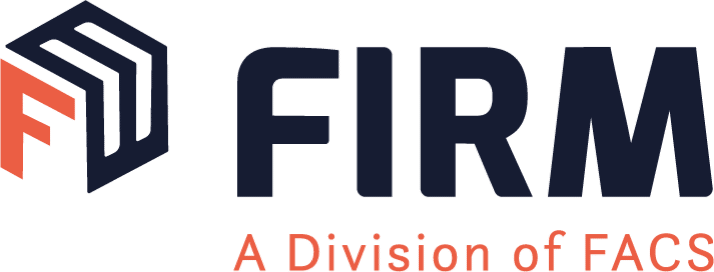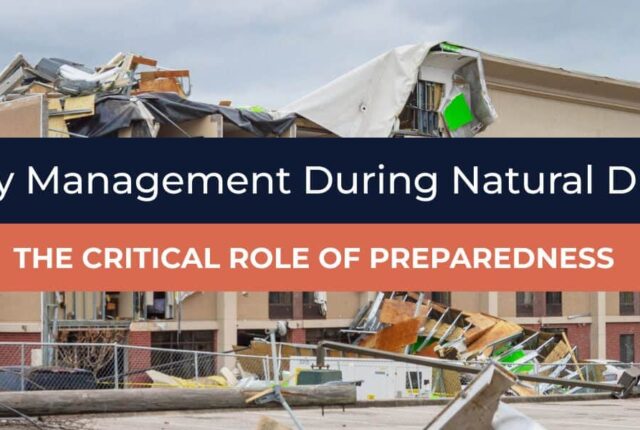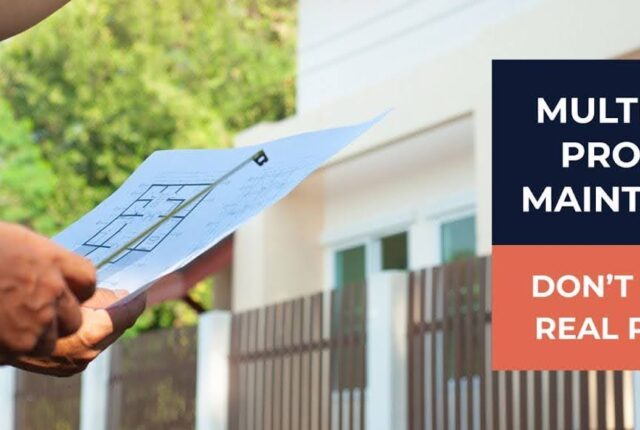
Cold Weather Preparation for Multifamily Properties
Whether your multifamily property is in Southern California or Northern Montana, each change of the seasons presents its challenges. In a way, the Montana multifamily property is better situated — because the owner is well aware of how tough winters can be. Owners in more temperate climates might not realize the necessity of cold weather preparation and fail to carry out preventative inspections/repairs. But the Montana owner would never take those chances.
Location-specific issues aside, we’ve prepared a checklist for multifamily building maintenance as winter approaches. Cold weather preparation isn’t just a good idea, it is essential to the successful operation of a multifamily property. And remember: When you perform cold weather preparation tasks, you’re not just protecting your buildings; you’re helping ensure your residents are safe and warm.
Cold Weather Preparation Multifamily Property Checklist
The following is an example of a cold weather preparation checklist. Your concerns will fluctuate appropriately depending on the location of your multifamily property.
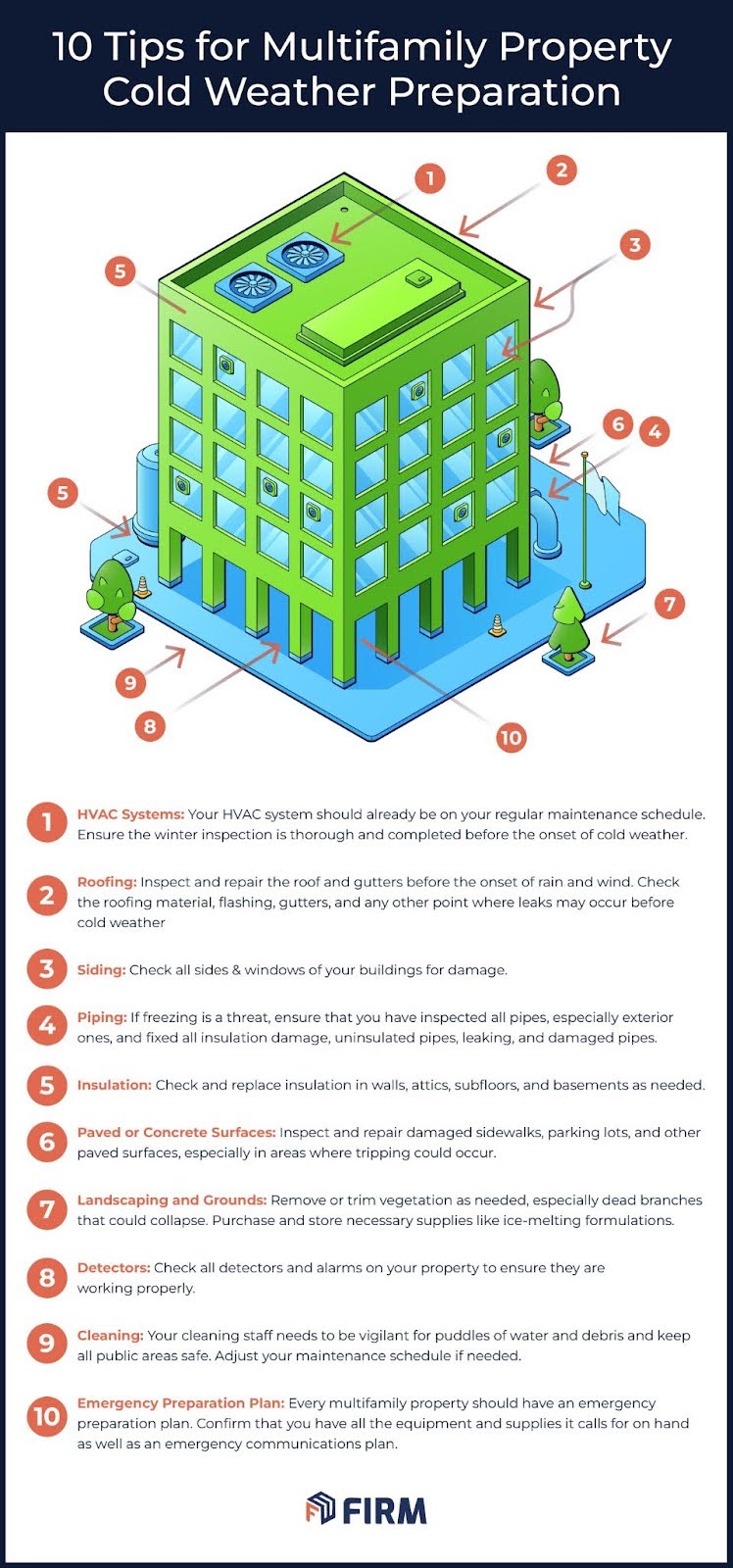
HVAC Systems: Your HVAC system should already be on your regular maintenance schedule. Ensure the winter inspection is thorough and completed before the onset of cold weather. Pay special attention to filters, and check all heating vent outlets to be sure they are not blocked. There is never a good time for an HVAC system to break down, but if there is one time you definitely don’t want problems, it’s during the winter. If you’ve any concerns about your system, address them now.
Roofing: Inspect and repair the roof and gutters before the onset of rain and wind. Check the roofing material, flashing, gutters, and any other point where leaks may occur. It is considerably easier to inspect and repair roofing in advance of cold weather than to clean up and dry out a property once water has found its way in. Ice dams can be especially concerning in colder climates.
Siding: Check all sides of your buildings for damage. If there are sections that need repair, repair them now. If windows need to be replaced or repaired, do it now. Most maintenance tasks are easier, less expensive, and more effective when performed in better weather. Don’t wait for bad weather to take action.
Piping: If your multifamily property is located in a region where freezing may occur, pay special attention to pipes on the exterior of the building or that run through uninsulated/unheated spaces. If the pipes are already protected, you will only need to replace damaged areas of the insulation. If they are not protected, taking care of the job prior to the onset of cold weather could be a good idea. In-ground sprinkler lines can cause substantial issues if not purged and winterized before the onset of frigid temperatures, as well.
Insulation: Insulation not only protects piping from freezing, but it also protects the interior of the building and its occupants. Check and replace insulation in walls, attics, and basements, as needed. Be sure to check subfloor insulation as well. That is an often overlooked source of cold air and occupant discomfort during the winter. Also, check the insulation around all doors, windows, and other locations where insulation is used.
Paved or Concrete Surfaces: Inspect and repair damaged areas on sidewalks, in parking lots, or damages affecting other paved surfaces. Pay special attention to areas that may cause slipping or tripping. Purchase and store necessary supplies like ice-melting formulations. Be sure to arrange for snow plowing as needed and predetermine whether the snow will be piled (and where) or transported off the property.
Landscaping and Grounds: Remove or trim trees and other vegetation, as needed. Be sure to get rid of dead branches and look for damaged sections of trees that may fall during a storm. Those huge branches may offer welcome shade in the summer; however, if they are damaged, they could create a catastrophe during the winter when ice and snow put too much weight on the limbs of the tree.
Detectors: As with your HVAC system, ensuring detectors are operating properly should be part of your regular maintenance schedule. Carbon monoxide and smoke detectors may not only be required by law but can also prevent tragedy by alerting residents to the danger. Check all detectors and alarms on your property to ensure they are working properly.
Cleaning: Winter weather can lead to puddles of water and debris, especially at entrances. Your cleaning staff will need to be vigilant about keeping all public areas safe. Check your maintenance schedule to see if changes or additions need to be made during cold weather and winter storms.
Emergency Preparation Plan: Every multifamily property should have an emergency preparation plan. That plan should not be buried in a file cabinet, though. It should be familiar to staff and practiced regularly. Check your plan to confirm you have all the equipment and supplies it calls for on hand. And make sure an emergency communications plan is included.
There’s one more part of winter preparation that can pay big dividends but is often overlooked: Educate your occupants. Tell them about the preparations you have made, the types of situations that may be encountered, and how they can help keep themselves, other residents, and the property safe during cold weather. Let them know you are on their side.
Begin by checking your emergency preparation plan and your regular maintenance schedule. Update them as needed, making sure all checkpoints mentioned here are included. If you are confused about how to prepare your plans or what regulatory bodies require, FIRM can help. Call us at (888) 910-0994.
